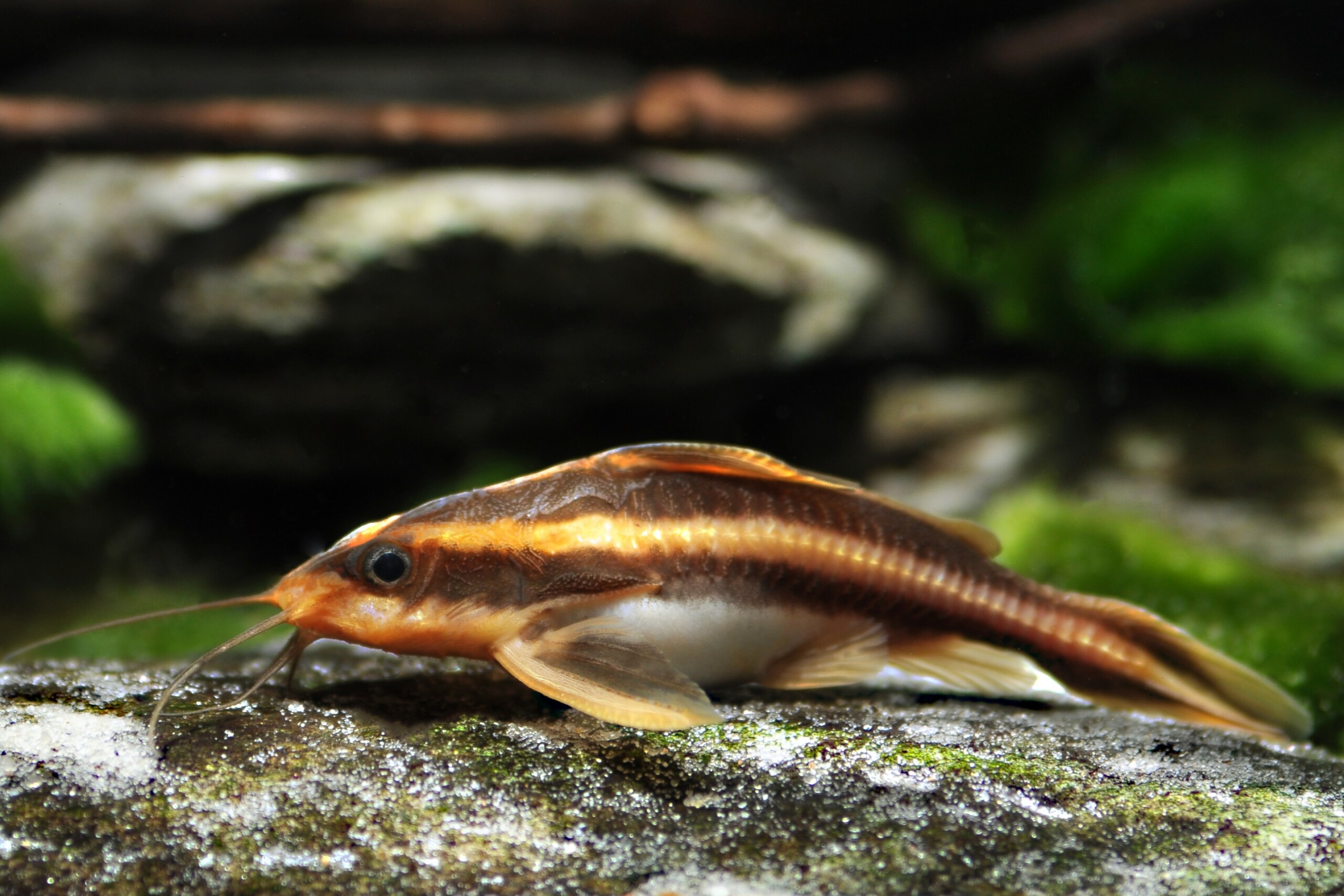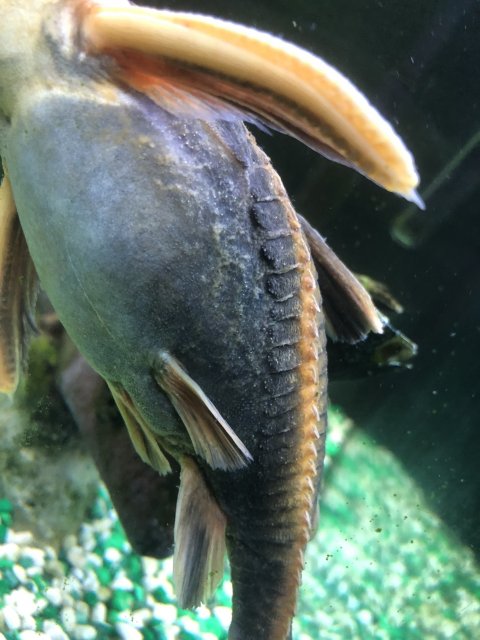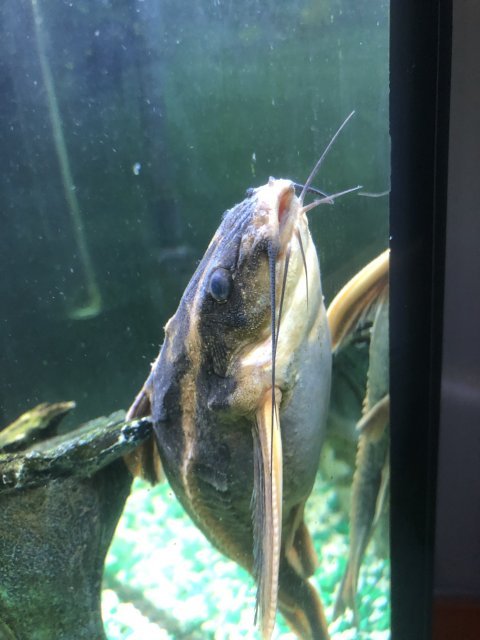Raphael catfish can suffer from health problems like fin rot and ich. Poor water quality often causes these issues.
Raphael catfish, also known as striped or chocolate catfish, are popular in home aquariums for their peaceful nature and unique appearance. Maintaining their health is crucial for their longevity and well-being. Common health issues include fin rot, often resulting from bacterial infections, and ich, a parasitic disease.
Poor water quality or inappropriate tank conditions typically trigger these problems. Regular tank maintenance, including water changes and monitoring ammonia levels, helps prevent these ailments. Providing a balanced diet and avoiding overcrowding also contribute to their overall health. With proper care, Raphael catfish can thrive and bring joy to any aquarium enthusiast.

Credit: www.fishi-pedia.com
Common Health Issues
Raphael catfish, known for their hardy nature, can still face health problems. Understanding common health issues helps ensure your fish live a long, happy life.
Signs Of Illness
Recognizing signs of illness early can save your Raphael catfish. Here are some common symptoms:
- Loss of appetite
- Labored breathing
- Clamped fins
- White spots on the skin
- Erratic swimming
If you notice these signs, take action quickly. Early detection is key to treatment.
Common Diseases
Raphael catfish are susceptible to several diseases. Knowing these helps in providing proper care.
| Disease | Symptoms | Treatment |
|---|---|---|
| Ich | White spots on skin, scratching | Increase water temperature, use medication |
| Fin Rot | Frayed fins, white edges | Improve water quality, use antibiotics |
| Swim Bladder Disease | Difficulty swimming, floating | Adjust feeding, provide peas |
Maintaining clean water and a balanced diet can prevent many diseases. Regular monitoring keeps your fish healthy.
Preventive Measures
Ensuring the health of your Raphael Catfish is essential. Proper care can prevent many health problems. Focus on water quality and diet to keep your fish healthy.
Water Quality
Maintaining clean water is crucial for Raphael Catfish. Poor water quality can lead to diseases.
- Check water parameters regularly.
- Keep the pH level between 6.5 and 7.5.
- Ensure ammonia and nitrite levels are at zero.
- Perform weekly water changes of 25-30%.
- Use a good filtration system.
Diet And Nutrition
Providing a balanced diet ensures your fish stay healthy. A varied diet helps prevent nutritional deficiencies.
- Feed high-quality commercial pellets.
- Offer live or frozen foods like brine shrimp.
- Include vegetables like peas or spinach.
- Feed small amounts twice daily.
- Avoid overfeeding to prevent water pollution.
| Parameter | Ideal Range |
|---|---|
| pH | 6.5-7.5 |
| Ammonia | 0 ppm |
| Nitrite | 0 ppm |
| Nitrate | <20 ppm |
Recognizing Symptoms
Raphael catfish are known for their resilience. Yet, they can fall ill. Recognizing symptoms early can save their lives. Here are key signs to watch for.
Behavioral Changes
Behavioral changes are often the first sign of trouble. A healthy Raphael catfish is active and curious. They hide, but they also explore.
- Lethargy: If your catfish is inactive, it might be sick.
- Erratic Swimming: Rapid, jerky movements are a red flag.
- Hiding Constantly: More hiding than usual indicates stress or illness.
Physical Indicators
Physical signs provide clear evidence of health issues. Always inspect your catfish closely.
| Symptom | Description |
|---|---|
| Color Changes | Fading or dark spots on the body. |
| White Spots | Indicates possible ich infection. |
| Fin Rot | Fins appear ragged or discolored. |
| Swollen Abdomen | May suggest bloating or parasites. |
Regular monitoring helps catch these signs early. This ensures prompt treatment and recovery.

Credit: www.monsterfishkeepers.com
Quarantine Procedures
Quarantining your Raphael catfish is essential to prevent health issues. It ensures they are free from diseases before joining the main tank. Follow these steps to set up an effective quarantine procedure.
Setting Up Quarantine Tank
First, choose a separate tank for quarantine. A 10-gallon tank works well. Ensure it has a filter, heater, and air pump. Use a clean tank without any previous fish residue.
Fill the tank with dechlorinated water. Match the temperature and pH levels of the main tank. Add hiding spots like PVC pipes or small caves. These will reduce stress for the catfish.
| Equipment | Details |
|---|---|
| Tank Size | 10 gallons or more |
| Filter | Internal or sponge filter |
| Heater | Set to 75-80°F |
| Air Pump | For oxygenation |
| Hiding Spots | PVC pipes or caves |
Duration And Monitoring
Quarantine your Raphael catfish for at least 2-4 weeks. During this period, observe the fish daily for signs of illness. Look for unusual behavior or physical changes.
Check the water parameters regularly. Maintain consistent temperature, pH, and ammonia levels. Perform weekly water changes of 20-30% to keep the tank clean.
- Check for white spots or fungal growth.
- Watch for sluggish movement or loss of appetite.
- Ensure the fish is eating well and behaving normally.
If you notice any health issues, consult a vet. Treat the fish as per the vet’s advice. Once healthy, you can safely introduce the catfish to the main tank.
Treatment Options
Raphael Catfish are generally hardy but can face health issues. Knowing the right treatment options is crucial for their wellbeing. Below are some effective treatment options, including medication and natural remedies.
Medication
Medications can be very effective in treating Raphael Catfish health problems. The most common issues include fungal infections, bacterial infections, and parasites.
- Fungal Infections: Use antifungal medications like Methylene Blue. Follow the dosage instructions carefully.
- Bacterial Infections: Antibiotics such as Erythromycin can be helpful. Always consult a vet for the correct dosage.
- Parasites: Treat parasitic infections with medications like Praziquantel. Ensure you follow the treatment guidelines.
Remember to isolate the infected fish during treatment. This helps prevent the spread of disease.
Natural Remedies
Natural remedies can also help treat some health problems. These are often gentler on the fish and the environment.
- Salt Baths: A salt bath can help with minor infections. Use 1 tablespoon of salt per gallon of water.
- Garlic: Garlic can boost the fish’s immune system. Add a small amount of crushed garlic to their food.
- Tea Tree Oil: This natural antiseptic can treat minor wounds. Use a diluted solution for best results.
Always monitor your fish closely while using natural remedies. Watch for any signs of stress or worsening conditions.
Environmental Adjustments
Environmental adjustments can greatly improve the health of your Raphael Catfish. Ensuring the right conditions will keep your fish happy and healthy. Let’s delve into the specifics of tank conditions and stress reduction.
Tank Conditions
Maintaining optimal tank conditions is crucial for Raphael Catfish. Ensure the tank has a minimum of 30 gallons. This provides enough space for them to swim and hide.
Keep the water temperature between 75-82°F (24-28°C). Use a heater and thermometer to monitor this.
Water pH levels should be between 6.5 and 7.5. A pH test kit will help you maintain this range.
Filtration is important to keep the water clean. Use a high-quality filter and perform regular water changes (20-30% weekly).
Stress Reduction
Stress can lead to health problems in Raphael Catfish. Provide plenty of hiding spots using plants, rocks, and caves. This mimics their natural habitat.
Minimize loud noises and sudden movements around the tank. These can startle your fish.
Keep a consistent light and dark cycle. Turn off the lights at night to create a natural environment.
Avoid overcrowding the tank. Ensure there is enough space for each fish to move freely.
Feed your Raphael Catfish a balanced diet. Offer them a mix of pellets, live food, and vegetables.
| Factor | Optimal Range |
|---|---|
| Tank Size | 30 gallons minimum |
| Water Temperature | 75-82°F (24-28°C) |
| pH Level | 6.5-7.5 |
Dietary Changes
Raphael Catfish are peaceful and hardy fish. But their health can suffer due to improper diet. Making dietary changes is crucial to keep them healthy and happy.
Balanced Diet
A balanced diet is key for Raphael Catfish. These catfish are omnivores. They eat both plant and animal matter. Ensure their diet includes:
- High-quality pellets
- Frozen or live foods like brine shrimp
- Vegetables such as peas and spinach
Avoid overfeeding. It can lead to obesity and health issues. Feed small amounts twice a day. This helps prevent waste buildup in the tank.
Supplementation
Supplements ensure the fish get all necessary nutrients. Calcium and vitamins are essential for their growth and health. You can provide supplements in various forms:
| Supplement | Source |
|---|---|
| Calcium | Cuttlefish bones or calcium blocks |
| Vitamin C | Commercial fish vitamin drops |
| Vitamin E | High-quality fish food |
Ensure supplements do not alter the water chemistry. Monitor the water quality regularly. This keeps your Raphael Catfish healthy.
Regular Health Checks
Ensuring the health of your Raphael Catfish requires regular health checks. These checks help to detect any early signs of illness or distress. Following a routine can lead to a long and healthy life for your fish.
Routine Observations
Daily observations are crucial for maintaining the health of your Raphael Catfish. Watch for any changes in behavior, such as reduced activity or hiding more than usual. Look out for physical changes, including spots, discoloration, or fin damage.
Use a simple checklist for daily observations:
- Check for normal swimming patterns.
- Observe eating habits.
- Inspect for visible injuries.
- Note any changes in color.
Professional Consultations
Regular visits to a veterinarian specializing in aquatic animals are essential. A professional can provide a detailed health assessment and suggest treatments if needed. Scheduling bi-annual check-ups can help keep your Raphael Catfish in top condition.
During professional consultations, expect the following:
- Comprehensive physical examination.
- Water quality testing.
- Parasite checks.
- Dietary recommendations.
Maintaining a healthy environment and following these steps ensures your Raphael Catfish thrives.

Credit: consolidatedff.com
Frequently Asked Questions
Are There Any Health Concerns With Catfish?
Catfish can contain contaminants like mercury and PCBs. Always source catfish from reputable suppliers. Cooking thoroughly reduces health risks.
How Long Do Raphael Catfish Live?
Raphael catfish typically live for 10 to 15 years. Proper care and a good diet can extend their lifespan.
Are Raphael Catfish Venomous?
Yes, Raphael catfish are venomous. They have spines that can deliver a painful sting. Handle with care.
What Is The Best Food For Raphael Catfish?
The best food for Raphael catfish includes sinking pellets, live or frozen bloodworms, brine shrimp, and occasional vegetables.
Conclusion
Proper care is essential for a healthy Raphael Catfish. Regular water changes and a balanced diet are crucial. Keep an eye on signs of illness to address issues early. With attentive care, your Raphael Catfish can thrive and bring joy to your aquarium for many years.
